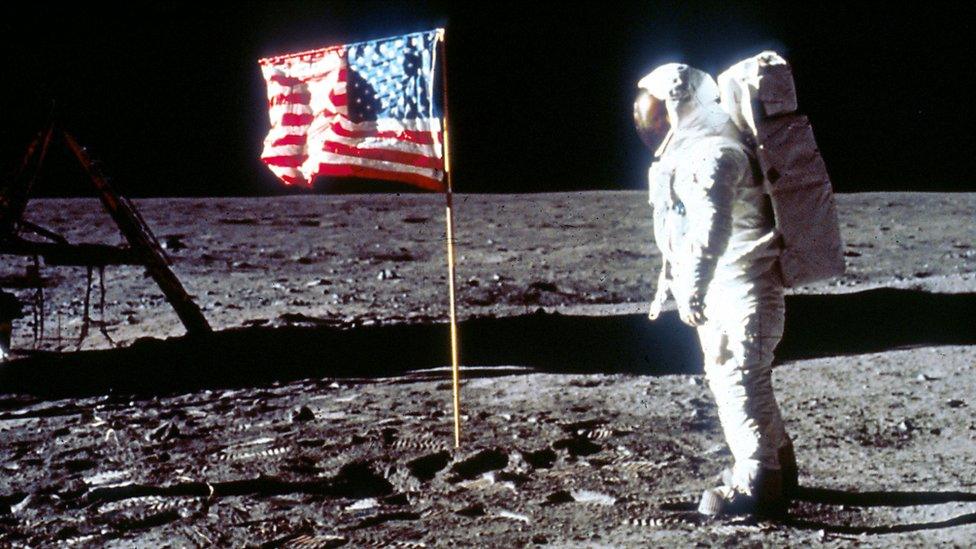Artemis; How Moon missions prepare humans for life on Mars
- Published
- comments

Humans could soon return to the Moon for the first time since 1972
Humanity's return to the Moon could take place within just a few years, with Nasa's Artemis 3 mission currently scheduled for 2025.
If successful, it'll be the first time astronauts have returned there since 1972.
However, its not just the lunar surface space agencies have their eyes on, with preparations also underway to one day get humans on Mars.
With ideas for future space missions becoming bigger and bolder, how best can we get ready for them?
Astronaut Kayla Barron could become the first woman to ever set foot on the Moon
Astronaut Kayla Barron, who could become the ever to set foot on the Moon, has said missions to the lunar surface will help prepare humans for lengthy periods of time in space, and could also set the stage for people one day going to Mars.
Last year, Kayla returned from six months on the International Space Station (ISS) where she and her crew carried out hundreds of scientific experiments.
The astronaut, along with others who spent long periods of time in space, has been thinking about some of the challenges that may arise from preparing for future Moon missions and beyond.
"One of the things they were talking about doing for Artemis was increasing the amount of water volume we get to take with us to drink to hydrate," she said.
"But they're not talking to the waste management team who's manifesting essentially the adult diapers we wear to deal with urine when we're in this spacesuit.
"You're like 'great that we have more water to drink, but where's it gonna go?'
"So there's things like that, that as a user of that technology, it's the first thing you think of when you hear we're gonna give you more water."
A prototype of the new spacesuit for the next Moon missions
Some preparations for the future are being undertaken by space agencies like Nasa, who recently unveiled the new spacesuits astronauts will wear for their next missions to the Moon.
The new suit is designed for the harsh environment of the lunar surface and to also help astronauts move around more easily.
Kayla has spent long periods of time in space
Kayla believes lots can be done to successfully tackle some of the big things that are likely to arise when it comes to space missions.
"I think we need diversity of all kinds to tackle these incredible challenges - sending human beings to live in space continuously for decades aboard the space station, sending human beings to the moon again, to the lunar South Pole, creating a permanent human presence on and around the Moon, and eventually sending human beings to Mars.
"That is a tough challenge," she said.
"We know that we will not succeed on our own, and so the more people, perspectives, backgrounds, we can bring in, the more successful the stronger our team will be."
What epic space missions we will see in 2023?
When it comes to the upcoming Artemis Moon missions, astronaut Kayla said there's lots she's looking forward to.
"We have a tonne to learn about the Moon that can tell us about our planet and our solar system.
"We explored this tiny little area of the Moon during Apollo." she said.
"And so I'm really excited to see the scientific discoveries that will come out of the geology work we do there. I'm also super excited that we're going to be developing and testing all the technologies that we'll use to send human beings to Mars."
- Published4 September 2022
- Published20 March 2023
- Published3 November 2020
